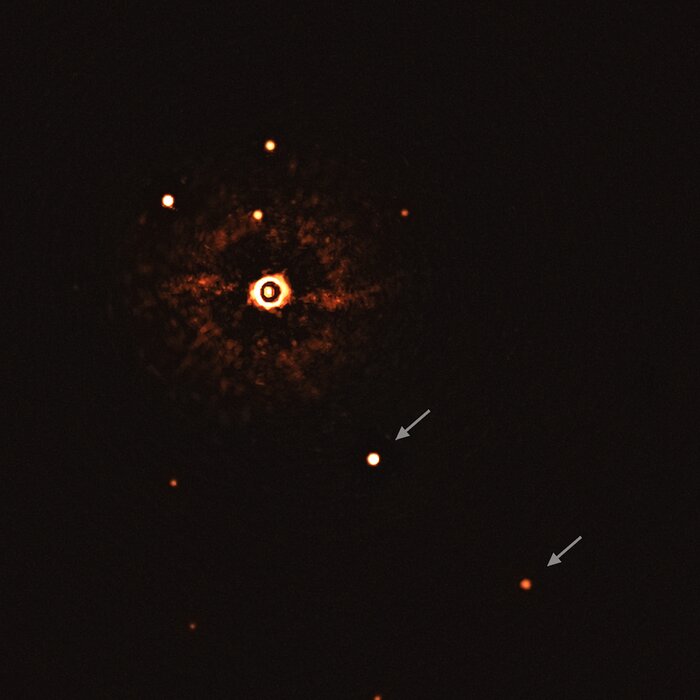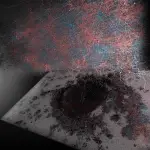Key Takeaways:
- Scientists have captured the first-ever images of multiple planets orbiting a sunlike star named TYC 8998-760-1, located about 300 light-years away in the constellation Musca.
- The star, similar in mass to our sun, hosts two massive planets, with the outer one being six times heavier than Jupiter and the inner one weighing 14 times Jupiter’s mass.
- This achievement marks only the third time scientists have directly imaged multiple planets around a single star, providing valuable insights into the diversity of planetary systems.
- Direct imaging allows researchers to characterize the atmospheres and elemental abundances of planets, aiding in the understanding of their environmental conditions and potential habitability.
- Despite the alien nature of the newly imaged planets, their size and youth make them visible through direct imaging, offering a glimpse into the early stages of planetary formation and evolution.
In a groundbreaking discovery, scientists have unveiled the first-ever images of multiple planets orbiting a sunlike star, TYC 8998-760-1, located approximately 300 light-years away in the Musca constellation. This star, similar in mass to our sun, hosts two colossal planets, challenging our preconceptions about planetary systems. The planets, orbiting at distances approximately four and eight times greater than Pluto’s separation from our sun, are significantly larger than any in our solar system.

The Spectro-Polarimetric High-contrast Exoplanet Research instrument (SPHERE), operating on the European Southern Observatory’s Very Large Telescope, played a crucial role in capturing these images. The outer planet, six times more massive than Jupiter, and the inner planet, with a mass 14 times that of Jupiter, appear as small dots around TYC 8998-760-1. This groundbreaking discovery was detailed in a study published in the Astrophysical Journal Letters.
Astrophysicist Rebecca Oppenheimer from the American Museum of Natural History emphasizes the importance of this work in expanding our understanding of planetary systems. She notes the vast diversity of systems and planets orbiting various stars, highlighting that there is no single blueprint for a planetary system.
This achievement is only the third instance where scientists have directly imaged multiple planets orbiting a single star. Previous observations focused on stars either much heavier or lighter than our sun, making TYC 8998-760-1 and its planetary system particularly significant for comparative studies. Direct imaging remains a rarity in the study of exoplanets, with the majority being identified through indirect means such as gravitational tugs or silhouetting against their host stars.
Alexander Bohn, the lead researcher from Leiden University, underscores the importance of direct imaging for characterizing the atmospheres and elemental abundances of planets. This information is crucial for making educated assessments of an alien world’s environmental conditions and potential habitability, paving the way for future insights into extraterrestrial life.
Despite the excitement surrounding the discovery, the two newly imaged planets are far from being candidates for life as we know it. Both are bloated gas giants situated in frigid orbits, lacking meaningful surfaces for potential organisms. Additionally, TYC 8998-760-1 and its planets are relatively young, with the system being only 17 million years old compared to our solar system’s 4.5 billion years. The youth of these planets, coupled with their massive size, makes them poor candidates for hosting life.
Bohn emphasizes that even if these planets had habitable conditions, their recent formation would not provide sufficient time for the emergence of life. The infrared glow emitted by these planets due to their formation, however, contributes to their visibility through direct imaging.
Taking pictures of exoplanets, especially those resembling Earth in size, remains a formidable challenge. Current technology allows astronomers to detect planets that are about one million times fainter than their host stars. However, achieving direct imaging of Earth-sized planets, which are even fainter, poses a significant hurdle. Bruce Macintosh from Stanford University highlights the difficulty by likening the observation to seeing a firefly next to a lighthouse from a considerable distance.
As technology advances, larger telescopes, including ground-based observatories with mirrors up to 30 meters across, are nearing completion. Astronomers are also advocating for the launch of more ambitious planet-imaging space telescopes in the coming decades, offering the potential to unveil smaller, older, and more temperate worlds that are currently beyond the reach of existing instruments.
Beyond capturing detailed images of distant planets, direct imaging provides insights into the nuanced details of planetary systems. In the case of TYC 8998-760-1, the two planets, despite forming around the same star and being of the same age, exhibit significant differences in mass. Comparing such properties helps astronomers understand how planetary masses influence their evolution.
Bruce Macintosh suggests that subsequent images of the system could reveal more about the planets’ orbits and the potential presence of unseen worlds. Questions about the alignment and circularity of planetary orbits provide clues about the formation processes, offering a tantalizing glimpse into whether planetary systems similar to our own are common or rare in the vast expanse of the universe. The ongoing exploration of distant planetary systems continues to raise new mysteries and refine our understanding of the complex processes governing the emergence and evolution of planets.


